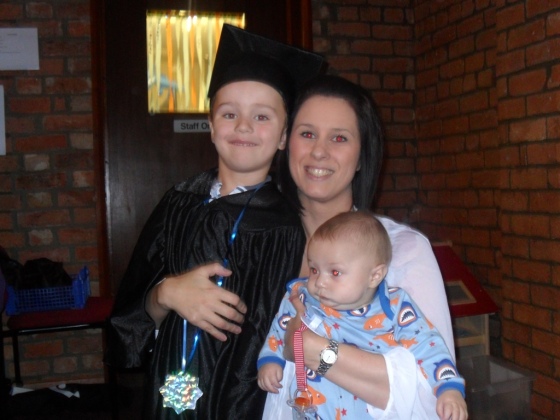Let me just say before writing this blog, I work in accounts, I am no means medically trained and you should always seek your surgeons recommendations for aftercare. This is MY experience of hypospadias that I want to share with you.
So, following Bens surgery I was completely blown away by names of medication, how to look after the dressing and the affects of the stent/catheter. Benjamin was 1 years old when he had his first operation which lasted about four hours. Whilst he was in theatre, the nurse showed me how to do the double nappy technique. So here is how I did it….
Step 1 – take a nappy and on the front panel, draw a cross. Then using scissors, cut along the lines to create four flaps. Tape the flap down to the inside of the nappy creating a diamond shape hole. This nappy will be your first one that you place on your child to catch any bowel movements.
Step 2 – gently place the catheter through the hole in the nappy. I found this easier to do before I secured the nappy on.
Step 3 – take your second nappy and do as you normally would when changing your little one. This nappy will catch the urine.
It’s easier than you think! I found it easier to prepare quite a few off the ones with holes in so your ready as soon as your little one is.
Benjamin’s medications were, calpol, nurofen, anti biotics and ditropan. Quite obviously, the calpol and nurofen were pain relief and the anti biotics were to prevent infection. Ditropan was an anti spasm medication….take note this is the important one.
The bladder spasms are caused by the catheter. It creates a cramping or pressure type pain. After Benjamin had his first spasm, I realised quickly the importance of all these medications. It was horrendous to have to watch him in such pain. The side effects of ditropan can be constipation, red face and dry mouth. I always ensured I gave him plenty to drink to try and make him as comfortable as possible.
I devised a medication table so I could see a what time he had which medication and when the next was due. The spasms did subside after a day or two and with his second operation he hardly noticed them.
Now most boys, Benjamin included, still want to get up and run around and play. Great, but parents watch them! The catheter is held in by a stitch, so no ride on toys, jumping etc. Easier said than done, I know, but it will save any unneeded emergency trips.
No baths or showers, so I just sponged Ben down until the stent was out.
And there you have it, how I coped with Benjamin’s aftercare. I hope this may help you a little with your journeys. But please remember to seek medical advice.
Lisa 🙂

